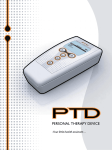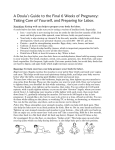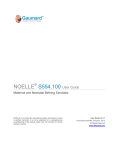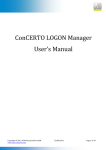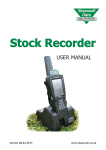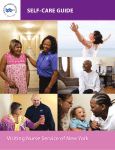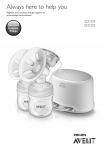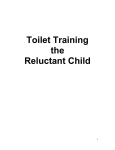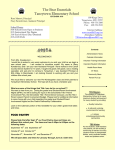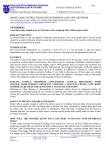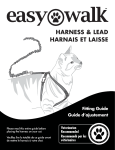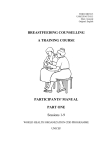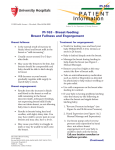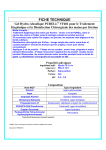Download postpartum care
Transcript
postpartum care Mother-Baby Resource Guide POSTPARTUM CARE CA R E I N S T RUCTIONS FOR T H E N E W MOT H E R Peri Care and Lochia You will have vaginal bleeding and discharge (this is called lochia) for up to six weeks after your baby’s birth, whether you had a vaginal or Caesarean birth. The site where the placenta had been attached inside your uterus must go through several stages of healing, and the discharge you have reflects that healing process. It is normal to have red to red-brown discharge for up to two weeks. You may pass blood clots up to the size of a plum. If you have larger than plum-sized blood clots, are bleeding more heavily than you did in the first 24 hours after the birth or your bleeding has a bad odor, call your doctor immediately. Following the red discharge, you will have a yellow to white vaginal discharge. This may last up to four more weeks. The amount of this discharge should decrease every couple of days. You should not have any further red bleeding during this time. If you do, you should call your doctor. Use your flush bottle with warm tap water each time after you use the toilet until all the vaginal discharge has completely stopped. Pat (or wipe, if you don’t have stitches) from front to back. If you were given Dermoplast spray and/or hydrocortisone cream, you may use these for as long as they make you more comfortable. Change your pad every time you use the bathroom. Do not use tampons until you have been given the okay by your doctor. Doing so too soon will increase your chances of developing a uterine infection. Douching is never recommended. If you have had a vaginal birth, you may use an ice pack on your perineum for the first 24 hours. This will help to keep the swelling at a minimum. Change your ice pack every one to two hours, or as it warms up. Your nurse will show you how to use the ice pack. After the first 24 hours, you may start using warm packs for your perineum. Use them at least four times a day for at least 20 minutes each time. Your nurse may also give you a Sitz Bath to soak your perineum in warm water. She will show you how to use it. Both the warm packs and the warm water soaks help promote healing for your episiotomy and/or tear. If you had an episiotomy or tear that the doctor stitched, your body will dissolve the stitches within a month. Discomfort from this site will lessen over the next several weeks and can be relieved by using ibuprofen or acetaminophen, as per your doctor’s instructions. If you are having increasing rather than decreasing discomfort, be sure to let your doctor know. POSTPARTUM CARE J-1 POSTPARTUM CARE Incision Care If you had a Caesarean birth, your incision was closed by either sutures (stitches), Dermabond or staples. Some sutures dissolve on their own, and others will need to be removed, as will staples. These may be removed before you leave the hospital or in your doctor’s office at a check-up. You or someone else should look at your incision each day. You may need to use a mirror to see the incision. If you see any redness or drainage, please call your doctor. Bathing If you had a vaginal birth, you should shower every day if your doctor has not given you restrictions. If you had a Caesarean birth, you may usually shower once you are out of bed without feeling dizzy and the dressing on your abdomen has been taken off by your doctor. Allow the warm, soapy water to run over your incision – that is all that is needed to keep the incision clean. Do not use a washcloth on the incision. Be sure to pat dry along the incision line after showering. Nutrition Good nutrition is important for your health and recovery. Eat a variety of foods, including foods high in fiber, such as whole grains and cereals, fruits and vegetables. A protein-rich diet helps your body to heal. Drink enough fluids to quench your thirst. Water, as well as juice and milk, are best. Limit the amounts of soda and caffeinated beverages you drink. Plan to have three meals a day with nutritious snacks in between. Keep in mind that your diet is ordered by the doctor, and you may need to transition back to solid food, especially if you had a Caesarean birth. Snacks and beverages are always available to our patients. You may request them from our staff. It is fine to have food brought in for you by family. Please check with your nurse to be sure that you have no dietary restrictions (such as a clear liquid diet after a Caesarean birth). Breast Care If you get a red, tender lump in your breast or have fever and chills, you may have a breast infection or mastitis. Call your doctor. (It is safe to keep breastfeeding). Bottle-Feeding Mothers: Your breasts may become engorged (filled with milk) anytime in the first three weeks following your baby’s birth. You should wear a comfortable-fitting bra. If your breasts begin to fill with milk, take a clean head of green cabbage. (There is something in cabbage leaves that helps to decrease engorgement and decrease the milk in your breasts.) Pull the leaves off and use the back of a butter knife to chop the veins slightly. Cut out a hole for the nipple and place the leaves in your bra around your breasts. When the leaves wilt, replace them with fresh leaves. You may still leak milk off and on for several weeks, but your breast should feel more comfortable in 24 to 48 hours. You also may use ice packs on your breasts to decrease the swelling and reduce the discomfort. If directed by your doctor, you may take ibuprofen or acetaminophen at regular intervals to decrease breast soreness. J-2 POSTPARTUM CARE POSTPARTUM CARE Breastfeeding Mothers: Your daily bath or shower is sufficient for cleansing your breasts. Avoid getting soap or shampoo on the nipple and areola (the dark skin behind the nipple), as this can cause excessive dryness. Some amount of nipple tenderness is normal in the first week of nursing, but it should be comfortable to nurse the baby. The amount of nipple tenderness or breast discomfort should decrease after the first week. If it does not, contact the Mother/Baby Educator or lactation consultant through the Just-In-Time Information Line (800-260-8355 or 610-954-1355). After nursing, leave your nipples exposed to the air for five to 10 minutes. You may express (gently squeeze out) a few drops of colostrum or milk and smooth that over the nipple to avoid dry, cracked nipples. Additionally, you may apply a pea-sized amount of Pur-Lan 100 or Lansinoh to your nipples following a feeding. (Do not use this product if you are allergic to wool.) This modified lanolin cream does not need to be removed before the next feeding. You may want to wear a bra for comfort and support, especially when your milk comes in. Breast shells (found in your breastfeeding support bag, which will be given to you by the Mother/Baby Educator or your nurse) can be worn inside your bra to also allow better air circulation and decrease nipple soreness. Do not wear them to sleep. They should not leave any red marks on your breast if your bra is the right size. Fo r f u r t h e r i n fo rm ation ab out breast c a re and bre a s t fe e d i n g, p l e a s e re fer to t h e b r e a s t f e e d i n g s e c t i o n ( s e c t i o n F ) . T he M o t h e r / B a by E duc a t o r o r yo u r n u r s e i s a v a i l a b l e t o a n s w e r y o u r q u e s t i o n s a n d o f f e r g u i d a n c e w i t h b r e a s t f e e d i n g. POSTPARTUM CARE J-3 POSTPARTUM CARE Elimination It is normal to urinate often in the first week after delivery. Empty your bladder regularly (every two to three hours) while awake. The amount of vaginal bleeding you have will increase with a full bladder. You may have some discomfort with urination in the first few days after childbirth. Use your flush bottle to rinse water over your perineum while you are urinating to decrease your discomfort. Drink plenty of fluids and continue to do Kegel exercises daily. After the first day, any difficulty with urinating, such as frequency or burning, should be reported to your doctor. It is normal not to have a bowel movement in the first few days following your baby’s birth. Enjoying a well-balanced diet, including plenty of fluids and fiber, will promote regular bowel habits. A mild stool softener, taken once or twice a day, may be helpful. If these measures have not worked and you have not had a bowel movement in several days, call your doctor. Always follow your doctor’s orders if using laxatives, rectal suppositories or enemas. After childbirth, some women may experience urinary incontinence (leakage of urine) or bowel incontinence. Strengthening the muscles of your pelvic floor helps this incontinence. These muscles, which may have weakened during delivery, help you hold your urine. Please tell your doctor at your six-week visit. Your doctor may suggest a visit to St. Luke’s Continence Management Program. Nurses at the program will teach you how to properly do pelvic muscle exercises and manage your bladder. To reach the St. Luke’s Continence Management Program, call 610-954-4960 or 1-800-471-3058 (toll free). Hemorrhoid Care Some women will have a new onset of hemorrhoids (swelling of blood vessels around the rectum) with pregnancy or after a vaginal birth. If the hemorrhoids were not present before the pregnancy, they will often disappear within a few weeks following child birth. Things that may help decrease your discomfort include: ★ Sitting in a warm tub of water or using the Sitz Bath (plastic container that fits on the toilet) you may have been given in the hospital. Soak your bottom for 20 minutes at a time, replacing the water as necessary to keep it warm. ★ Keep the area clean by using the flush bottle with warm tap water after each time you use the bathroom. Pat dry from front to back, and change your pad each time you use the bathroom. This will decrease your chances of developing an infection and will promote healing. ★ An anesthetic spray can be used if ordered by your doctor. ★ Tucks (witch hazel pads) and hydrocortisone cream applied to the area also can be comforting. Once home, do not leave Tucks on for more than 15 minutes. ★ A side-lying position and avoiding prolonged sitting can help to decrease swelling and discomfort. ★ Maintain adequate fluid intake, eat a healthy diet that includes fruits and vegetables and use a stool softener to decrease constipation and ensure greater comfort and bowel movements. J-4 POSTPARTUM CARE POSTPARTUM CARE W H E N T O C A L L Y O U R D O C TO R Call your doctor if you are concerned about anything related to your recovery. Call your doctor if you have any of the following problems: ★ Temperature above 100.4 degrees (oral). ★ Excessive vaginal bleeding: soaking one pad in an hour. ★ Blood clots bigger than a plum or a continued increase in clots. ★ Foul smelling vaginal discharge. ★ Burning or pain when you urinate. ★ Pain or tenderness in your calves. ★ Tender or painful breasts (one or both). ★ Postpartum emotions that are becoming more intense or frequent over time, or emotions that you feel are interfering with your daily activities. Activities Please call a member of our staff to assist you the first time you get out of bed following your baby’s birth. We will need to measure your urine, and we want to be sure you do not get dizzy when standing up. After this, if you are not lightheaded, we encourage you to begin participating in your care and the care of your baby. Restrict your activity to care for yourself and your baby for about the first week. It is good to avoid any housework or carrying anything heavier than your baby in the first few weeks. Both of these activities may cause you to bleed more heavily. Increase activities gradually and avoid becoming overtired. Go up and down steps more slowly and as infrequently as possible. Three weeks after child birth, you may resume more normal activities, but continue to rest at least once a day. Further activities will be discussed when you visit your doctor. POSTPARTUM CARE J-5 POSTPARTUM CARE Exercise A postpartum exercise program can begin as soon as you have been given the go-ahead by your doctor. The type of delivery you have had along with how you are recovering will guide your doctor’s recommendation. As you begin to exercise and increase your activity, be aware of the color and amount of vaginal discharge that you are having. If the amount increases or if it returns to bright red, you may need to decrease your activity for a time. The key is to gradually increase activity and not to start at the same rate that you had been exercising previously. It also is important to be aware that for up to six months after your delivery, your joints may be more prone to injury because of the relaxation of ligaments by the hormones of pregnancy. Again, gradually increasing your activity will help you to exercise safely and build up your strength. Walking is an excellent way to start getting back to your normal activity level. Commonly used exercises include the following: 1. Lie on your back. Bend up your knees and place your feet flat on the floor about hip-width apart. Exhale as you pull your abdomen in hard and press the small of your back toward the floor. Raise your buttocks slightly at the same time. Inhale and release. Do 20 times. 2. Lie on your back. Have your knees comfortably bent up toward your chest and apart. Extend your arms between your legs. Raise your head and shoulders up off the floor as you reach out with your arms. Hold this position for three seconds. Relax your shoulders and head on the floor and rest. Begin by doing 10 repetitions and build up to 20. J-6 POSTPARTUM CARE POSTPARTUM CARE 3. Lie on your back and bring your bent knees toward your chest, with legs together. Extend your arms at your side, by your hips. Curl your head and shoulders up, keeping your chin to your chest, so that your forehead moves toward your knees. Roll back to a lying position. Begin doing 10 repetitions and build up to 20. 4. Sit on the floor with your knees bent and ankles crossed. Reach your arms over your head and bend forward. Pull your abdominal muscles toward your spine and keep your buttocks on the floor. Hold for a count of 20, taking normal breaths. Be sure to check with your doctor before you do these or other exercises. Contact your doctor if you develop any unusual symptoms while exercising. POSTPARTUM CARE J-7 POSTPARTUM CARE Medication There are a number of medications you may take during your recovery period. They may be taken for various reasons. All the medications discussed here are safe for breastfeeding mothers to use. Always follow your doctor’s instructions regarding medications, and talk to him or her if you have any questions or concerns. Following a vaginal birth, many women find ibuprofen (Advil, Motrin, etc.) gives them relief from uterine cramping (afterpains), generalized aches, soreness and perineal discomfort. Do not take this medication on an empty stomach. Before taking ibuprofen, check with your doctor if you are allergic to aspirin. Acetaminophen (Tylenol) is another common pain reliever used during the postpartum recovery period. If you have a Caesarean birth, your doctor may prescribe a stronger pain reliever for you at the time of discharge. This medication may be a narcotic; be sure to carefully follow the directions for use. Most women benefit from continuing to take one prenatal vitamin a day for the first six weeks after delivery. If you are breastfeeding, you may want to continue taking your prenatal vitamin as long as you breastfeed. If you are anemic (have a low blood count), your doctor may have you take additional iron tablets. In order for your body to best absorb iron, take it after a meal with a citrus juice. Do not take it at the same time as your prenatal vitamin. Iron is constipating for some women; be sure to drink a lot of fluid and eat plenty of fiber, fruits and vegetables. While in the hospital, you may have been given a stool softener twice a day. Your doctor may recommend that you continue to take one at home. If so, the doctor will recommend a brand likely to be effective for you. Stool softeners can be purchased without a prescription. Your doctor may prescribe Methergine pills for you. Methergine causes your uterus to contract so that you have less vaginal bleeding and your uterus returns to its pre-pregnant size at a normal rate. This medication is usually prescribed to be taken for a few days. You may feel stronger afterpains when taking this. It may be helpful to take ibuprofen at the same time for some relief. You should not take Methergine if you have high blood pressure. If your blood type is Rh negative and your baby is Rh positive, you will have received an injection of Rhogam. Rhogam prevents your body from producing antibodies which could harm any future Rh positive babies that you may carry. Keep a record of the date this was given. This is important information to have during another pregnancy. During your pregnancy, a blood test was done to check your immunity to rubella (German measles). If you were not immune, a Rubella vaccination may have been given to you following your baby’s birth. You should have received written information about this immunization; keep this in your medical records. It is important to avoid another pregnancy for three months after getting this medication. If you are unsure if you ever had chicken pox (Varicella), you may have a blood test during your pregnancy to test your immunity. If you are not immune, a vaccine for chicken pox may be given to you after delivery and repeated at your 6-week postpartum visit at your doctor’s office. J-8 POSTPARTUM CARE POSTPARTUM CARE If you chose to take birth control pills to prevent you from becoming pregnant, your doctor may prescribe them during your recovery period. Be sure to start them when instructed to do so, and take them daily. Birth control pills are not usually started until you are at least three weeks postpartum. There is an increased risk of blood clots before this time. Depo-Provera is an injectable form of birth control that may be given before discharge from the hospital. It is very important to get your next injection no more than 12 weeks after the first one. Many women find that they have red vaginal bleeding for longer than two weeks following the birth of their baby when they use Depo-Provera. This is normal. (A calcium supplement should be taken daily when using Depo-Provera. Please discuss this with your doctor.) If you call your doctor with any problem, be sure to remind him or her that you are using this medication. Both birth control pills and Depo-Provera can impact the amount of breast milk you produce if you are a breastfeeding mother. Speak with the Mother/Baby Educator (at the Bethlehem Campus) or your doctor if you have concerns. The impact on milk production is less once breastfeeding is well-established, usually after three weeks of regular breastfeeding. Sexuality and Contraception Women vary greatly in their physical recovery from childbirth, as well as their desire for intimacy. Some find they want physical closeness in the first few postpartum weeks, and others prefer to wait. Intercourse should be avoided until your doctor says it is all right. Introducing anything into your vagina before it is recommended can increase your chances of infections and discomfort. You can be physically close in other ways. Talk with your partner about your feelings and needs, and don’t feel you need to rush into resuming your sexual relationship until you are ready. It is not unusual for women to be fearful of becoming pregnant too soon, or to worry that intercourse might be uncomfortable. It is important to speak with your partner about these concerns. Many women experience vaginal dryness in the postpartum period, especially if they are breastfeeding. Use a water-soluble vaginal lubricant (such as K-Y Jelly) during intercourse to ease this condition. These products can be purchased without a prescription. Avoid the use of petroleum jelly or oil-based lubricants. This dryness will self-correct in time. About half of all postpartum women (both bottle-feeding and breastfeeding women) will ovulate before they get their first period. You should consider yourself able to get pregnant at any time. A contraceptive is recommended for at least one full year between pregnancies, for your health and the health of your baby. There are many methods of contraception (birth control) available. Talk to your doctor or nurse when you go for your postpartum check up. If you had used a diaphragm prior to this pregnancy, you must be refitted now. Do not use your old diaphragm without having the size and fit checked. POSTPARTUM CARE J-9 POSTPARTUM CARE P O S T PA RT U M E M OT I O N A L C H A N G E S A N D A D J U S TM E N TS The changes in emotions that are associated with the postpartum period, commonly called the “Baby Blues,” can last up to six weeks after the birth of a baby. These feelings are not unusual. They occur in up to 90 percent of women who have had a baby, and they include feeling sad and crying for no apparent reason, impatience, irritability, restlessness, mood swings, anxiety and feeling overly emotional, overwhelmed, confused or easily rejected. You also may experience a loss of appetite and fatigue and the inability to sleep. These feelings may be coupled with the guilt that you don’t find motherhood 100 percent blissful. The exact reason for these feelings is unknown. Some of the things that have been found to be related to these emotional changes are: ★ Having another baby in the past year. Your body may have not completely recovered from the last pregnancy and birth. ★ Changes in your physical and psychological states. ★ The new obligations of motherhood. ★ Hormonal fluctuations. ★ Strained marital or family relations. ★ Lack of sufficient personal resources. The postpartum blues can be impacted by the exhaustion that accompanies the care of a newborn, feeling like you have no time for yourself and that you are housebound, your insecurity about your mothering skills and poor nutrition. T H E F O L LOWING C A N D E C R E A S E T H E S E V E R I T Y A N D L E N G T H OF T I M E T H AT YO U E X P E R I E N C E T H E P O S T PA RT U M B LU E S : ★ Sleep or rest when your baby sleeps. ★ Let household chores go while you rest. ★ Limit or stagger visitors. ★ Accept offers of help, such as assistance with meal preparation and household chores. ★ Take time for yourself each day. This may be a nap, a walk, a soothing bath or time to read or watch TV, even if for a brief time. ★ Talk about your feelings with family, friends, your doctor and nurse and other new mothers. ★ Eat a nutritious diet and drink plenty of fluids. ★ When approved by your doctor, exercise daily. J-10 POSTPARTUM CARE POSTPARTUM CARE After a few weeks, if you still experience these feelings, continue to be up and down emotionally or if things seems to get worse, you may be one of the many women who experience postpartum depression. Up to 20 percent of all new mothers develop postpartum depression. This can be treated, but it must first be recognized by the woman. If you are unsure whether your emotions are normal or are of concern, do not hesitate to talk with your doctor. Another option is to call the Just-In-Time Information Line (800-260-8355 or 610-954-1355) to speak to a Mother/Baby Educator. Fathers also may experience physical and emotional adjustments after the birth of a baby. They may become exhausted as a result of changes in household routines, interrupted sleep, increased responsibilities and concern for their partner. For many men, talking about their feelings, doubts and concerns is very helpful. Help for families experiencing these emotional adjustments is available through: ★ St. Luke’s Hospital Mother/Baby Educators and Just-In-Time Information Line: 800-260-8355 or 610-954-1355. ★ St. Luke’s Hospital Case Management Department: 610-954-4234 (Bethlehem Campus). ★ Depression After Delivery (information service): 215-295-3994. POSTPARTUM CARE J-11 POSTPARTUM CARE BREAST SELF EXA M (Information adapted from the American Cancer Society’s self breast exam guidelines) Every woman should take the time to do a breast self exam each month. This is an easy exam for women to do, and it can save your life. Most breast lumps are not cancer, but if you find a lump it is best to be safe and have it checked by your doctor. Monthly breast exams help you to know what your breasts feel like normally. This allows you the best chance of noting any changes early, which is important for successful treatment and a cure of breast cancer. The best time to do a breast exam is seven to 10 days after the day your period began, when your breasts are least likely to be swollen and tender. If you are breastfeeding, the exam should be done when your breasts are emptied of milk, such as right after a feeding or pumping. If you have irregular or no periods (such as with Depo-Provera, pregnancy or menopause), then you should select the same day each month to do your exam. How To Do a Breast Self Exam 1. 2. 3. ★ A breast self exam should be done lying down and sitting up. ★ When lying down, put a pillow under the shoulder of the breast you are examining. Place this arm up, with your hand behind your head. ★ Use the finger pads of the three middle fingers of the opposite hand to feel for lumps or thickening. ★ Use three levels of pressure – light, medium and deep – to examine your breast. As you do this, you will learn what your breasts feel like most of the time. A ridge in the lower curve of each breast is normal. ★ Always examine your breasts in the same way. Choose one of these patterns: 1. Make several circles around the breast with your fingerpads until you have covered the entire breast. 2. Move up and down until you have covered the entire breast. 3. Examine from the outer part towards the nipple in wedge-shaped sections, moving around the breast until it is completely examined. J-12 POSTPARTUM CARE POSTPARTUM CARE ★ The area of coverage is from the collar bone to the bra line, and from the breast bone to the armpit. ★ Doing this routinely and in the same pattern will help you remember how your breast feels. ★ When you are finished with one breast, repeat the same thing on the second breast. ★ Repeat this exam for both breasts while sitting up or in the shower. ★ If you are unsure of how firmly to press or how to do this exam, ask for help from your nurse, your doctor, the Mother/Baby Educator (at the Bethlehem Campus) or your office nurse. For added safety: ★ Also look at your breasts in the mirror while standing. Check to see if they look different and if there is any dimpling, changes in the nipple, redness or swelling. ★ Squeeze each nipple to see if there is discharge. (Discharge is normal if you are breastfeeding or have weaned in the last few months.) Remember: ★ If you find any changes in your breasts, see your doctor right away. ★ Also know that your breasts will feel differently during pregnancy and while you are breastfeeding. If you have any questions, call your doctor. POSTPARTUM CARE J-13

















